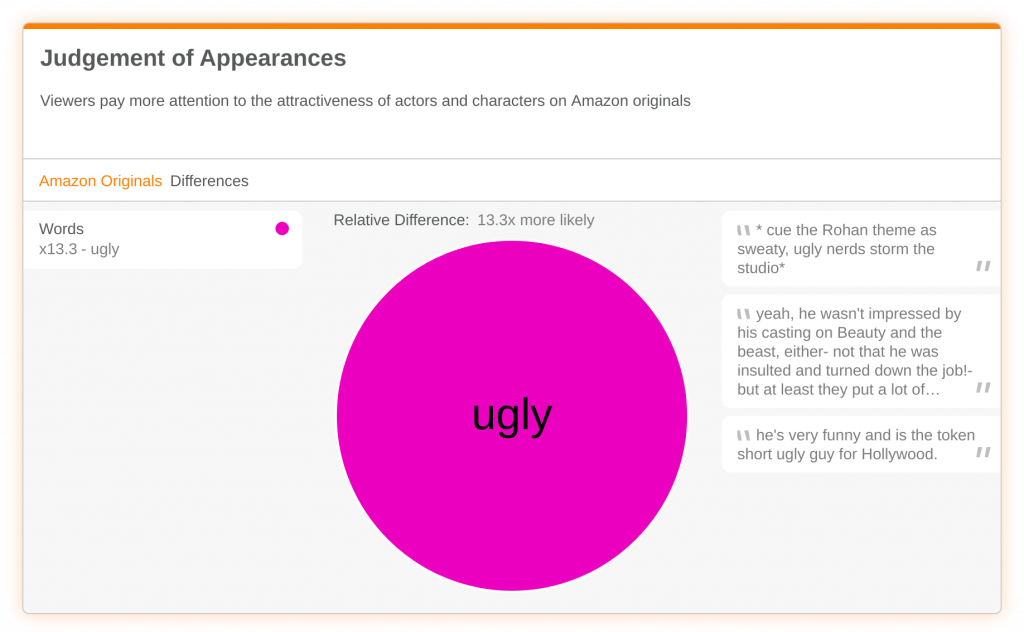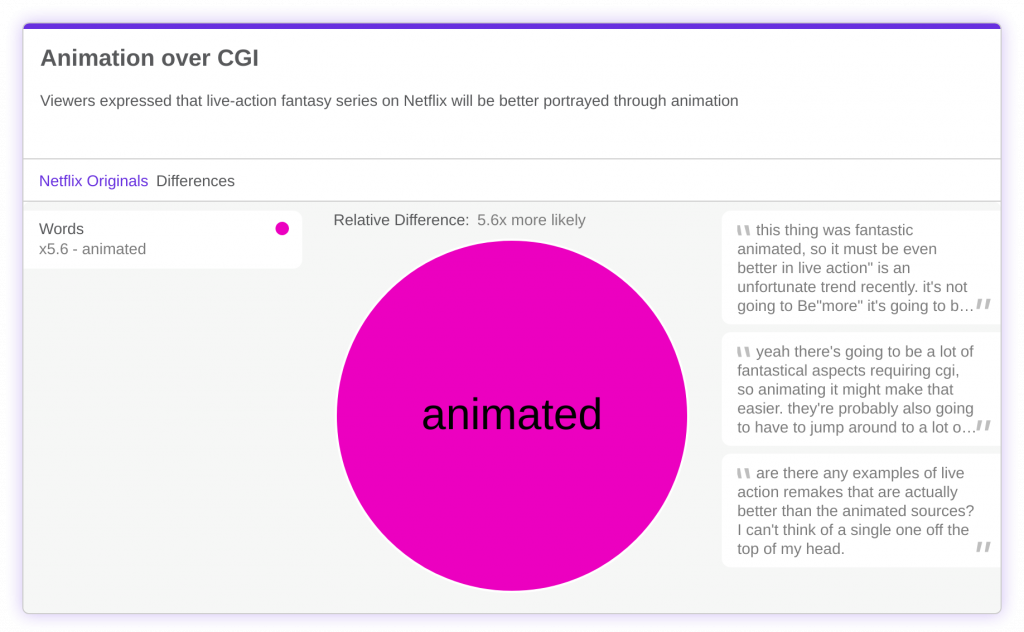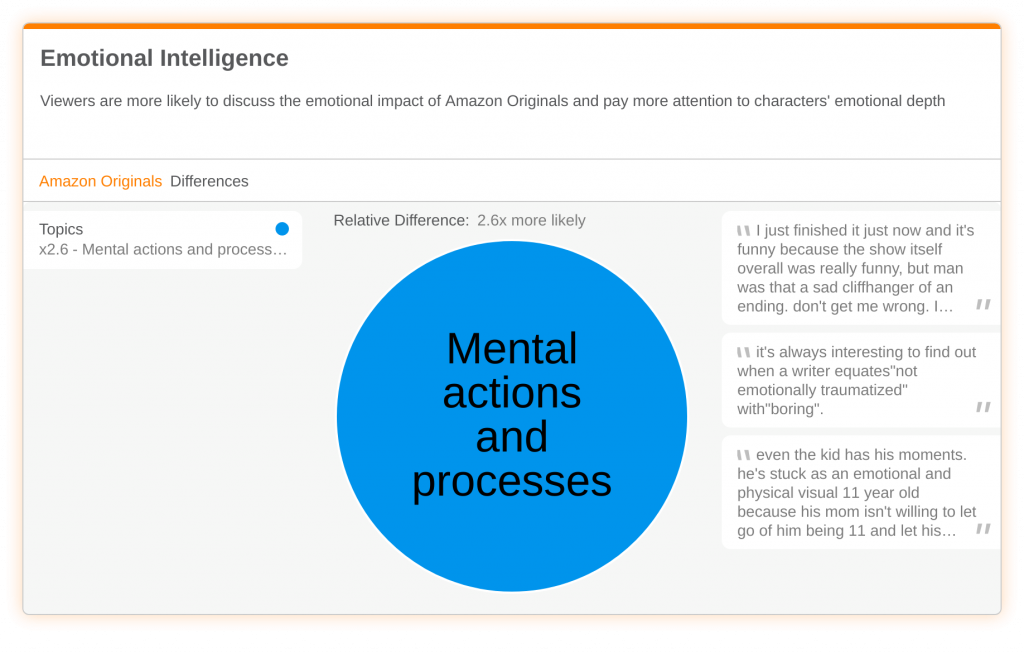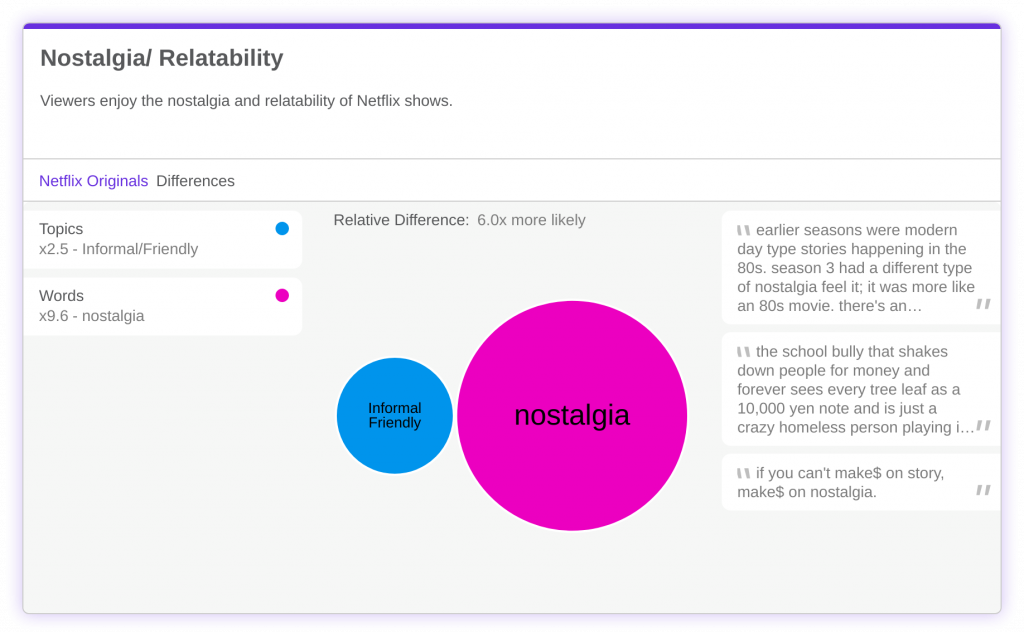Netflix vs. Amazon Prime: Understanding competitors in the entertainment space

By Natalie Jones, Business Development Manager
People have been gravitating towards online streaming more and more, especially after the effects of the lockdown and there is no denying that Netflix and Amazon Prime are the largest players in the industry- but with the market becoming increasingly competitive, consumers are using original content as a major deciding factor in where they’re going to watch.
In 2021, Netflix spent $14 billion on content, and a hefty portion of that would have been allocated to original content. A good example of what they’ve done previously is their 2019 film The Irishman, which was one of their most-watched movies ever and cost around $160 million, largely thanks to some anti-ageing special effects.
Netflix also created House of Cards which was an incredibly successful attempt to use a completely data-driven approach to content creation. The streaming service analyzed data patterns of preference to formulate a show around these trends – meaning in theory, they were able to create a show which was customized to their audiences desires.
Amazon, whilst not quite on the same level as Netflix, spent similarly staggering amounts on content: at just under $10 billion last year and $250 million just for the rights to the new Lord of the Rings series
But has this immense investment in original content paid off?
There has been considerable controversy concerning the streaming giants’ ability to produce good content, with many people arguing that whilst there are a handful of outstanding shows and films, the majority is underwhelming.
Understanding your competitors with text analysis
I went to some popular entertainment forums and looked at thousands of conversations being had about Netflix vs. Amazon Prime’s original programming. Using competitor analysis, I then compared the language of these conversations against each other to see if I could uncover any differences in the way people talk about these shows, and as a way of understanding these two competitors on a deeper level.
What you see is what you get
When it came to the visual aspects of content, fans were certainly opinionated. This is particularly important seeing as cinematography is usually where a huge proportion of the production budget goes. It is interesting to see that viewers of Amazon Originals were more likely to focus on the appearance or general attractiveness of characters.

People were 13.3x more likely to refer to both the actors and the characters of Amazon Prime shows as ‘ugly’. In some cases, this may be the result of highly effective prosthetics and make-up, or perhaps viewers are looking for a lead character they can swoon over, and shows they can drool over.

Concerning Netflix Originals, however, viewers were more interested in animation. Particularly talking about live-action fantasy shows such as The Witcher, where viewers agreed that they would rather see it as an animated series rather than live. There was a common theme that viewers seemed impartial to the impressive CGI that Netflix invests in. In fact, it was expressed that shows would be equally as good if not better in animation, because the content had potential to be ‘less impressive’ when most of the budget is dedicated to CGI, rather than other elements such as storyline.
Time to get personal
The most intriguing elements of the analysis came from the more personal responses that audiences had. Fans of Netflix vs. Amazon Prime’s original content spoke much more about their own emotional reactions to shows. By using words like ‘bummed’, ‘care’ and ‘sad’, it’s clear that the more emotional side of the shows resonates with the Amazon audiences, and a show with the ability to tap into those emotional depths tended to be evaluated as ‘good’.
 Meanwhile, on Netflix, it was the relationships between characters that viewers found more compelling. They were 1.7x more likely to discuss the characters’ relationships. This ranged from cringing at romances that lacked chemistry, to the enjoyment of wholesome friendships and teasers of ‘almost’ relationships. Sex was also a hot topic, but it is no secret that sex sells.
Meanwhile, on Netflix, it was the relationships between characters that viewers found more compelling. They were 1.7x more likely to discuss the characters’ relationships. This ranged from cringing at romances that lacked chemistry, to the enjoyment of wholesome friendships and teasers of ‘almost’ relationships. Sex was also a hot topic, but it is no secret that sex sells.


Nostalgia was another key feature of Netflix Originals for viewers. The show Stranger Things is a prime example of this. Whether it be in the soundtrack, costume design or sequels to old classics, it was widely expressed that building on nostalgia to provide fresh and compelling content was a recipe for success. This relates nicely to the fact that viewers were also 2.5x more likely to discuss the topic of informality and friendliness. Formed by words such as ‘relatable’ and ‘likeable’, this topic paired with the element of nostalgia suggests that viewers respond to content they can connect with on a sentimental level.
When it comes to understanding competitors, text analytics is key to digging deeper into your competitor data. This analysis of Netflix vs. Amazon Prime revealed important consumer insights which highlight how Netflix and Amazon don’t necessarily need to pour millions of dollars into impressive special effects and technology. Rather, the focus should be on developing compelling storylines. It seems that tapping into audiences’ emotional intelligence and sentimentality is key to creating resonant content (with a sprinkling of good-looking actors thrown in for good measure).
Relative Insight is used by entertainment brands and organisations as a sophisticated tool for audience research.
Register for our next Spotlight Series webinar: Let me entertain you, to find out how our clients are innovating with text data in the film and entertainment industry.

